 W
WBattōjutsu is an old term for iaijutsu. Battōjutsu is often used interchangeably with the terms iaijutsu and battō.
 W
WBōjutsu (棒術), translated from Japanese as "staff technique", is the martial art of stick fighting using a bō, which is the Japanese word for staff. Staffs have been in use for thousands of years in Asian martial arts like Silambam. Some techniques involve slashing, swinging, and stabbing with the staff. Others involve using the staff as a vaulting pole or as a prop for hand-to-hand strikes.
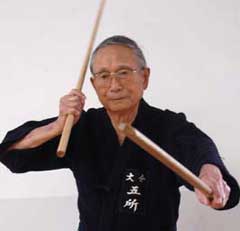 W
WThe Gosho Ha Hyōhō Niten Ichi-ryū (五所派兵法二天一流) was one of the branches of the Niten Ichi-ryū, the Kenjutsu school created by Miyamoto Musashi, under the supervision of Gosho Motoharu, Shihan of the 9th generation. Since April 2007 was reintegrated with the seito under Yoshimoti Kiyoshi, 12th successor of Hyōhō Niten Ichi-ryū and 10th successor of Gosho-ha Hyōhō Niten Ichi-ryū.
 W
WHojōjutsu or Torinawajutsu or just Nawajutsu , is the traditional Japanese martial art of restraining a person using cord or rope, as a precursor to modern-day handcuffs. Encompassing many different materials, techniques and methods from many different schools, Hojōjutsu is a quintessentially Japanese art that is a unique product of Japanese history and culture.
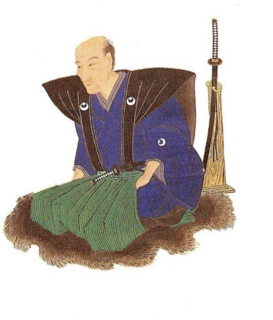 W
WHokushin Ittō-ryū Hyōhō (北辰一刀流兵法) is a koryū (古流) that was founded in the late Edo period (1820s) by Chiba Shusaku Narimasa. He was one of the last masters who was called a Kensei.
 W
WHōten-ryū (法典流) is a Japanese martial art founded in 1600 CE. It is a school founded on the use of the sword, however it has several different kobuki in its curriculum. It is also notable for its hidden weapons or items that appear to hide among everyday things.
 W
WHōzōin-ryū (宝蔵院流) is a traditional school (koryū) of Japanese martial arts that specializes in the art of spearmanship (sōjutsu). Hōzōin-ryū was founded by Hōzōin Kakuzenbō In'ei in c. 1560. In'ei was a Buddhist monk of Kōfuku-ji Temple in Nara, Japan. He adored martial arts and trained in the art of swordsmanship. At the same time, he was coached and mentored by Daizendayū Moritada (大膳太夫盛忠), a master of the spear. Under this master's guidance, In'ei honed his spearmanship.
 W
WIaijutsu (居合術) is a combative quick-draw sword technique. This art of drawing the Japanese sword, katana, is one of the Japanese koryū martial art disciplines in the education of the classical warrior (bushi).
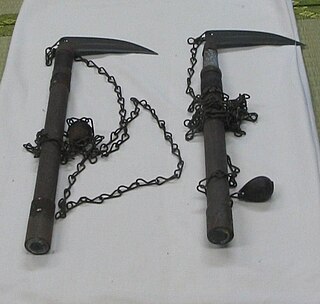 W
WIsshin-ryū (一心流) is a traditional school of the Japanese martial art of kusarigamajutsu, the art of using the chain and scythe (kusarigama). Its exact origin is disputed, and may have been founded as early as the 14th century by the samurai Nen Ami Jion 念阿弥慈恩 (b.1351-?), but the modern-day techniques were compiled and incorporated no later than the 17th century, by the unification of Harayuki Uemon Ujisada (原志右衛門氏貞), hence the name. It is preserved in Shintō Musō-ryū as a "heiden".
 W
WJittejutsu (十手術) is the Japanese martial art of using the Japanese weapon jitte. Jittejutsu was evolved mainly for the law enforcement officers of the Edo period to enable non-lethal disarmament and apprehension of criminals who were usually carrying a sword. Besides the use of striking an assailant on the head, wrists, hands and arms like that of a baton, the jitte can also be used for blocking, deflecting and grappling a sword in the hands of a skilled user.
 W
WJōdō (杖道), meaning "the way of the jō", or Jōjutsu (杖術) is a Japanese martial art using a short staff called jō. The art is similar to bōjutsu, and is strongly focused upon defense against the Japanese sword. The jō is a short staff, usually about 3 to 5 feet long.
 W
WKashima Shinden Jikishinkage-ryū , often referred to simply as Jikishinkage-ryū or Kashima Shinden, is a traditional school (koryū) of the Japanese martial art of swordsmanship (kenjutsu). The school was founded in the mid-16th century, based upon older styles of swordsmanship, and is one of the few ancient Japanese martial arts schools still existing today.
 W
WKashima Shin-ryū (鹿島神流) is a Japanese koryū martial art whose foundation dates back to the early 16th century. The art developed some notoriety in Japan during the early 20th century under Kunii Zen'ya (1894-1966), the 18th generation sōke (headmaster). The current sōke is the 21st generation, Kunii Masakatsu. While the line is still headed by the Kunii family, the title of sōke is now largely honorific, and the responsibility for the preservation and transmission of the ryūha now lies in the shihanke line, currently represented by the 19th generation, Seki Humitake.
 W
WKenjutsu (剣術) is an umbrella term for all (ko-budō) schools of Japanese swordsmanship, in particular those that predate the Meiji Restoration. Some modern styles of kendo and iaido that were established in the 20th century also included modern forms of kenjutsu in their curriculum. Kenjutsu, which originated with the samurai class of feudal Japan, means "methods, techniques, and the art of the Japanese sword". This is opposed to kendo, which means "the way of the sword" and uses a bamboo sword (shinai) and protective armour (bōgu).
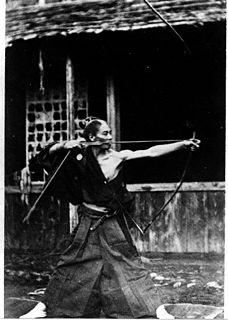 W
WKyūjutsu (弓術) is the traditional Japanese martial art of wielding a bow (yumi) as practiced by the samurai class of feudal Japan. Although the samurai are perhaps best known for their swordsmanship with a katana (kenjutsu), kyūjutsu was actually considered a more vital skill for a significant portion of Japanese history. During the majority of the Kamakura period through the Muromachi period (c.1185–c.1568), the bow was almost exclusively the symbol of the professional warrior, and way of life of the warrior was referred to as "the way of the horse and bow" .
 W
WKyūshin-ryū is a form of the martial art Jujutsu consisting of striking, throwing and grappling techniques. It was developed by the Samurai in feudal Japan as a method of dispatching an armored opponent using unarmed techniques. According to the Densho of various schools and historical records, these systems of unarmed combat began to be known as Jujutsu during the Muromachi period (1333–1568).
 W
WShindō Yōshin-ryū (新道楊心流), meaning "New Willow School" is a traditional school (ko-ryū) of Japanese martial arts, teaching primarily the art of jūjutsu. The first kanji of the name originally translated into "新=New", but in the mainline branch the kanji for "new" was eventually changed into the homophonic "神=sacred". The name of the school may also be transliterated as Shintō Yōshin-ryū, but the koryu tradition should not be confused with the modern school of Shintōyōshin-ryū which is unconnected.
 W
WShinkage-ryū (新陰流) meaning "new shadow school", is a traditional school (ko-budō) of Japanese martial arts, founded by Kamiizumi Ise-no-Kami Nobutsuna in the mid-sixteenth century. Shinkage-ryū is primarily a school of swordsmanship, and is a synthesis of Nobutsuna's studies in the school of Kage-ryū (Aizu). Shinkage-ryu can also refer to Kashima derived schools such as Kashima Shinden Jikishinkage Ryu and Kashima Shin Ryu.
 W
WShintō Musō-ryū, or Shindō Musō-ryū (神道夢想流), most commonly known by its practice of jōdō, is a traditional school (koryū) of the Japanese martial art of jōjutsu, or the art of wielding the short staff (jō). The technical purpose of the art is to learn how to defeat a swordsman in combat using the jō, with an emphasis on proper combative distance, timing and concentration. The system includes teachings of other weapon systems which are contained in Shintō Musō-ryū as auxiliary arts. The school is sometimes abbreviated as SMR.
 W
WShurikenjutsu (手裏剣術) is a general term describing the traditional Japanese martial arts of throwing shuriken, which are small, hand-held weapons used primarily by the Samurai in feudal Japan, such as metal spikes bō shuriken, circular plates of metal known as hira shuriken, and knives (tantō).
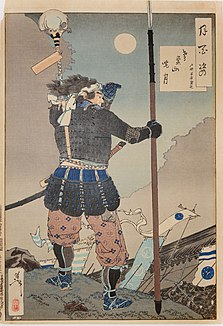 W
WSōjutsu (槍術), meaning "art of the spear", is the Japanese martial art of fighting with a Japanese spear .
 W
WSuiō-ryū Iai Kenpō is a style of classical Japanese swordsmanship. It was founded by Mima Yoichizaemon Kagenobu at the end of the Sengoku period. The style specialises in iaijutsu but other arts, such as jōjutsu, naginatajutsu and kusarigamajutsu are practised as well.
 W
WTenshin Shōden Katori Shintō-ryū (天真正伝香取神道流) is one of the oldest extant Japanese martial arts, and an exemplar of bujutsu. The Tenshin Shōden Katori Shintō-ryū was founded by Iizasa Ienao, born 1387 in Iizasa village, who was living near Katori Shrine at the time. The ryū itself gives 1447 as the year it was founded, but some scholars claim circa 1480 is more historically accurate.
 W
WTessenjutsu is the martial art of the Japanese war fan (tessen). It is based on the use of the solid iron fan or the folding iron fan, which usually had eight or ten wood or iron ribs.
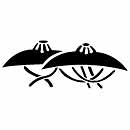 W
WYagyū Shingan-ryū (柳生心眼流), is a traditional school (koryū) of Japanese martial arts. Different styles of Yagyū Shingan-ryū, such as Heihojutsu and Taijutsu, assert different founders, Takenaga Hayato and Araki Mataemon respectively, but they all go back to Ushū Tatewaki, referred to in some historical scrolls as Shindō Tatewaki, who taught a system based on Sengoku-period battlefield tactics, that was called Shindō-ryū.